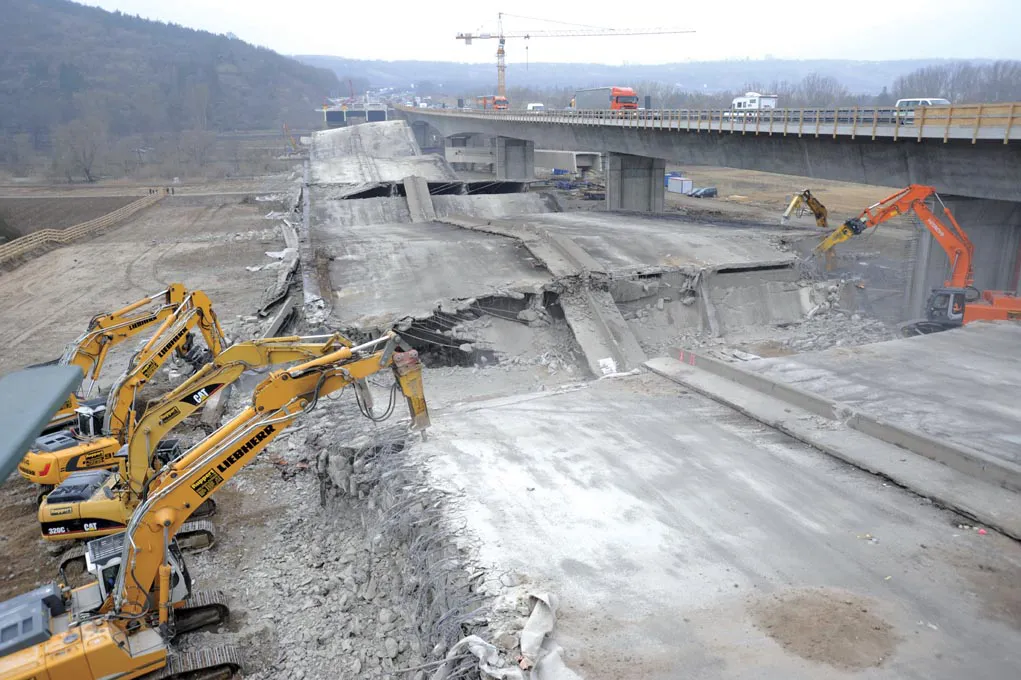Specialist demolition contractors working for the Kentucky Transportation Cabinet have successfully brought down one truss span of the Old Ledbetter Bridge near Paducah. The bridge has been taking traffic across the Mississippi River since 1931.
Boat traffic on the Tennessee River was halted for about 90 minutes by the U.S. Coast Guard. KYTC said there were several audible warning signals, then a countdown, followed by a flash and puff of smoke from the explosive charges. As sound of the explosion echoed a
October 1, 2014
Read time: 2 mins
Specialist demolition contractors working for the Kentucky Transportation Cabinet have successfully brought down one truss span of the Old Ledbetter Bridge near Paducah. The bridge has been taking traffic across the Mississippi River since 1931.
Boat traffic on the Tennessee River was halted for about 90 minutes by the U.S. Coast Guard. KYTC said there were several audible warning signals, then a countdown, followed by a flash and puff of smoke from the explosive charges. As sound of the explosion echoed along the river banks, KYTC said the steel truss dropped into about 30 feet (10m) of water below the bridge.
Once an all-clear was issued, river traffic was allowed to resume and a crane was moved in to start pulling steel from the river. The constractor believes it should take about 48 hours to remove the steel and place it on barges to be hauled to a scrap yard.
See it happen on the video below, which was forwarded to World Highways by Demolition News website:
Boat traffic on the Tennessee River was halted for about 90 minutes by the U.S. Coast Guard. KYTC said there were several audible warning signals, then a countdown, followed by a flash and puff of smoke from the explosive charges. As sound of the explosion echoed along the river banks, KYTC said the steel truss dropped into about 30 feet (10m) of water below the bridge.
Once an all-clear was issued, river traffic was allowed to resume and a crane was moved in to start pulling steel from the river. The constractor believes it should take about 48 hours to remove the steel and place it on barges to be hauled to a scrap yard.
See it happen on the video below, which was forwarded to World Highways by Demolition News website:








